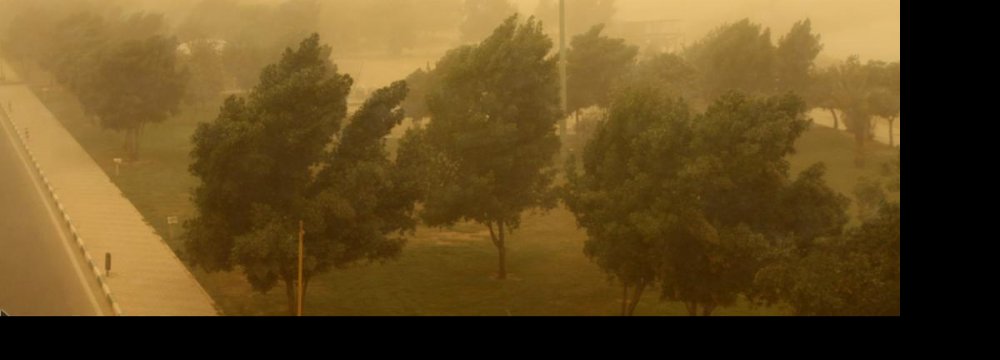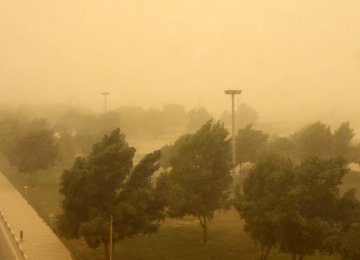Local media reported on Tuesday that in the proposed budget bill for the fiscal year that started on March 20, the government has not allocated funds to help combat dust storms that have afflicted more than two-thirds of the country.
Conservative legislators, namely Abbas Papizadeh, the spokesman for the Majlis Agriculture Committee, have lambasted the government and the Department of Environment for “not taking the problem seriously,” Jahan News reported.
However, Seyyed Muhammad Mojabi, deputy for legal and parliamentary affairs at the DOE, downplayed the media hype and put the rumor to rest.
Speaking to reporters late Tuesday, the official stressed the need and importance of fighting dust storms and reviving wetlands, adding that the government’s plan is to allocate between 600 billion to 1.2 trillion rials ($17.4 million - $34.8 million) to the national campaign against dust storms, the Persian daily Entekhab reported.
“The government has earmarked the funds for the next economic development plan (2016-21),” he said, adding that combating the sandstorms is at the center of the plan’s chapter on environment protection.
Environmental officials have emphasized that mitigating dust storms demands a long-term plan, so supporters of the move may argue that demanding funds to fight the phenomenon in the five-year development plan instead of the budget bill makes sense.
Severe and Frequent
Massive dust storms frequently hit Khuzestan Province in the southwest, locking everyone indoors, crippling the entire oil province and filling emergency rooms with people complaining of breathing difficulties and other ailments.
In February, the concentration of PM10 (particulate matter with a diameter of 10 micrometers or less) in the air reached dangerously high levels —at one point it was 66 times the standard, which is 150 µg/m3 — leading to school closures.
Even on Tuesday, schools in various cities across the embattled province were closed due to high concentration of particulate matter in the air.
Experts are of the opinion that most of the sources of dust storms, which have become more frequent and intense recently, are located in Iraq, Saudi Arabia and Syria, but domestic sources, including the desiccated wetlands such as Hoor al-Azim in Khuzestan and Hamouns in Sistan-Baluchestan, have made a bad situation worse.
Tehran has appealed for an international effort to help tackle the problem that has imposed a high toll in human life and colossal economic cost on the government, but only Iraq has shown some interest in working toward that goal. The Saudis have no diplomatic ties with Tehran and even when they had the House of Saud apparently had no interest in environmental cooperation.
According to Ziaeddin Shoaei, head of the DOE task force to combat the dust storms and smog, an estimated $1.45 billion is needed to tackle the near permanent phenomenon.





